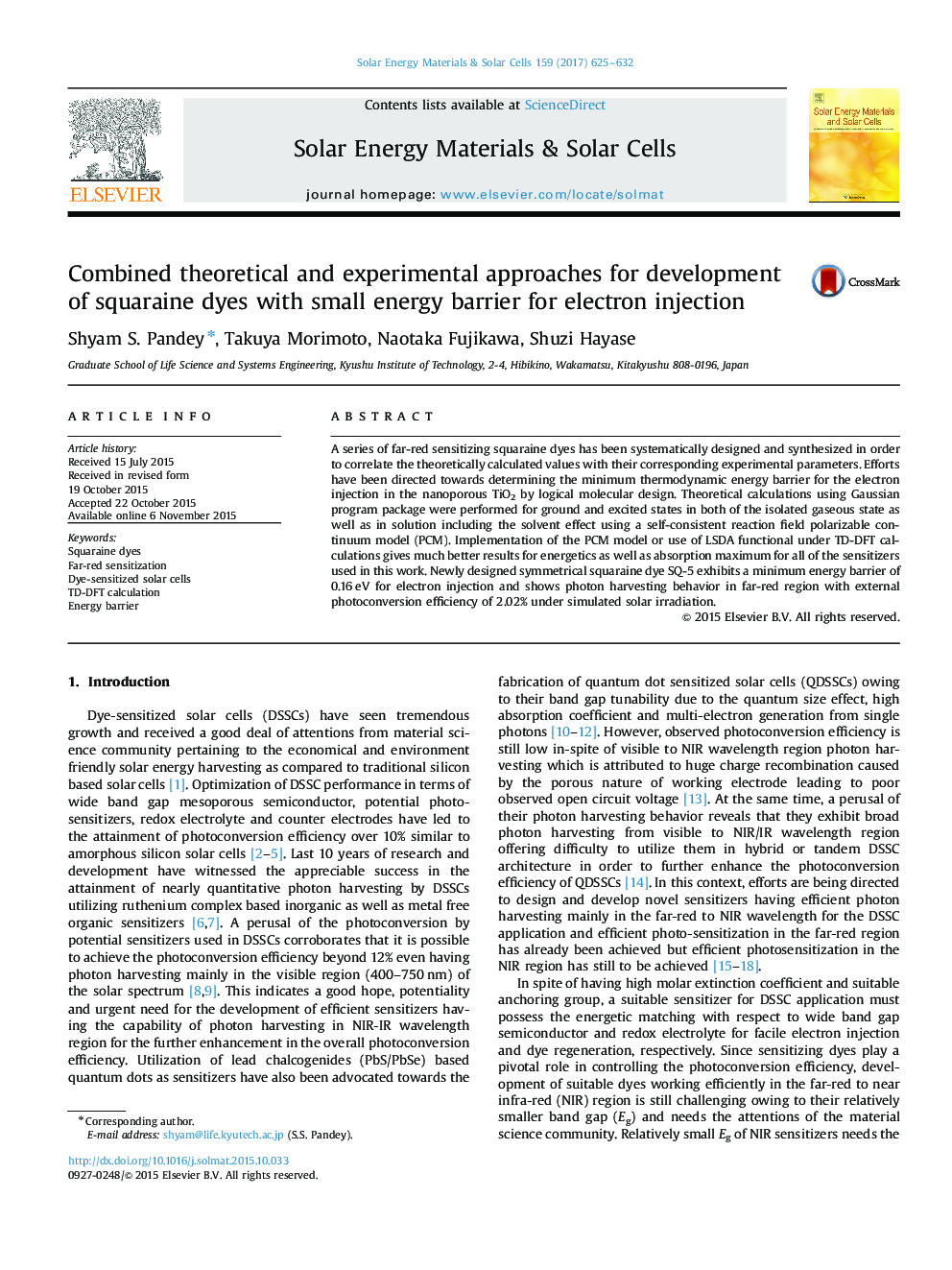| Article ID | Journal | Published Year | Pages | File Type |
|---|---|---|---|---|
| 6457610 | Solar Energy Materials and Solar Cells | 2017 | 8 Pages |
â¢A series of far-red sensitive dyes with tunable energetics were designed and developed.â¢6-311G/LSDA was found be optimum for reliable theoretical prediction of HOMO and λmax.â¢It is possible to inject electrons in TiO2 CB with minimum energy barrier of 0.16 eV.
A series of far-red sensitizing squaraine dyes has been systematically designed and synthesized in order to correlate the theoretically calculated values with their corresponding experimental parameters. Efforts have been directed towards determining the minimum thermodynamic energy barrier for the electron injection in the nanoporous TiO2 by logical molecular design. Theoretical calculations using Gaussian program package were performed for ground and excited states in both of the isolated gaseous state as well as in solution including the solvent effect using a self-consistent reaction field polarizable continuum model (PCM). Implementation of the PCM model or use of LSDA functional under TD-DFT calculations gives much better results for energetics as well as absorption maximum for all of the sensitizers used in this work. Newly designed symmetrical squaraine dye SQ-5 exhibits a minimum energy barrier of 0.16Â eV for electron injection and shows photon harvesting behavior in far-red region with external photoconversion efficiency of 2.02% under simulated solar irradiation.
